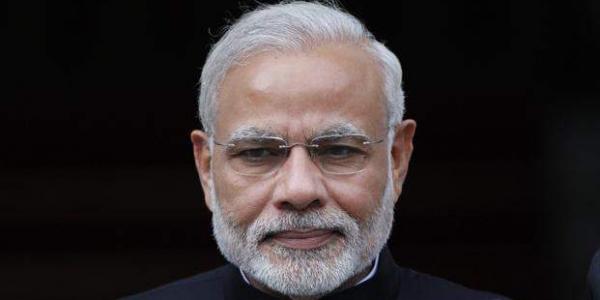Public healthcare is in a dire state in the country, as the Congress Party which ruled the country for decades could not provide universal healthcare in the country despite its repeated promises to do so in every election manifesto. Healthcare in the country is primarily in private hands and very expensive, therefore most of the poor people are denied affordable care. According to the draft of National Health Policy, “Over 63 million people are faced with poverty every year due to healthcare costs alone. It is because there is no financial protection for the vast majority of healthcare needs.” The poor and needy have to sell their assets like jewelry in order to get quality healthcare, or land up borrowing money from Sahukars who levy heavy interests. The share of non regular expenditure on healthcare as a proportion of total household monthly per capita expenditure is 6.9 percent in rural areas and 5.5 percent in urban areas.
Modi government is set to launch Ayushman Bharat scheme on September 23 from Jharkhand. Under the scheme, Modi government will provide 5 lakh health insurance cover to 50 crore people, which is nearly 40 percent of the population of the country. Besides the insurance cover, the government will create 1, 50,000 wellness centers across the country under the Ayushman Bharat scheme. The wellness centers which include Sub-centres, Primary Health Centers (PHC) and Community health centers (CHC) are the first line of contact for primary health care for the citizens of the country. The families which will benefit from the scheme will be identified from Socio-economic and caste census (SECC), 2011 data. This is the largest public health insurance scheme in the world. Union health minister, JP Nadda reached Jharkhand to oversee preparations to launch the Ayushman Bharat scheme “Jharkhand has always been a special place for us and the Prime Minister. It has done very well on major health indicators like reducing maternal mortality rate (MMR), infant mortality rate (IMR) and Total Fertility Rate (TFR). It is also a place where attention on health issues is required. That is why we decided to launch it from here,” said Nadda.
The National Health Protection Scheme (NHPS) will offer treatments at 20 percent lower rates than the Central Government Health Scheme (CGHS) and Rashtriya Swasthaya Bima Yojana (RSBY) under what is touted as the famed Modicare. Indu Bhushan, chief executive of Ayushman Bharat said “CGHS and Rashtriya Swasthya Bima Yojana (RSBY) rates have been used as reference prices for fixing the rates under the Modicare scheme. However,the rates under the new scheme are on an average 15-20% lower than that of CGHS.” CGHS is the existing medical care scheme for central government employees started in 1954 under the Ministry of Health and Family Welfare, while RSBY was started in 2008 by the Manmohan Singh government to provide health insurance coverage to people living Below Poverty Line (BPL). An official from health ministry said “The ministry has finalized the rates for 1,354 packages, which will be covered under NHPS. The packages include 23 specialties such as cardiology, ophthalmology, orthopedics, urology, and oncology, etc.”
Twelve states have decided to take the insurance route in which the government pays a fixed premium to an insurance company, which in turn pays the hospitals. These include Uttarakhand, Haryana, Nagaland, Tripura, and Meghalaya, Gujarat, Kerala, Himachal Pradesh and Tamil Nadu. The states have decided to adopt a hybrid model where a part of the payment will be made through insurance and the rest through trusts. In the trust, model bills are reimbursed directly by the government. Among the states that are joining the Modicare health policy, Uttar Pradesh, Bihar, Haryana did not have any scheme of their own earlier, and therefore, will be the biggest beneficiaries. Telangana, Andhra Pradesh, and Rajasthan had their own schemes but are going with the NHPS. According to NITI Aayog, the NHPS will cost a total of Rs 120 billion. The calculation is based on the assumption that the premium per family will be between Rs 1,000 and Rs 1,200. The central government will pay 60 percent and states will pay up to 40 percent in most of the state. The break up ratio is 90:10 in NE states and the three Himalayan states of Jammu and Kashmir, Himachal and Uttarakhand, while it is 100% central funding for UTs without a legislature.
The lancet, most respected public heath medical journal praised PM Modi for prioritizing universal health care in India. “The prime minister has grasped the importance of health not only as a natural right of citizens, but also as a political instrument to meet the growing expectations of India’s emerging middle class,” said Richard Horton, editor-in-chief of the ‘The Lancet’. The Ayushman Bharat policy by the government will create a competitive environment in the market to provide cheap and better healthcare in the country. Ayushman Bharat will be able to provide healthcare to the last man of the country which will be the realization of “Antyodaya” dream of BJP ideologue Pt Deen Dayal Upadhyay.
